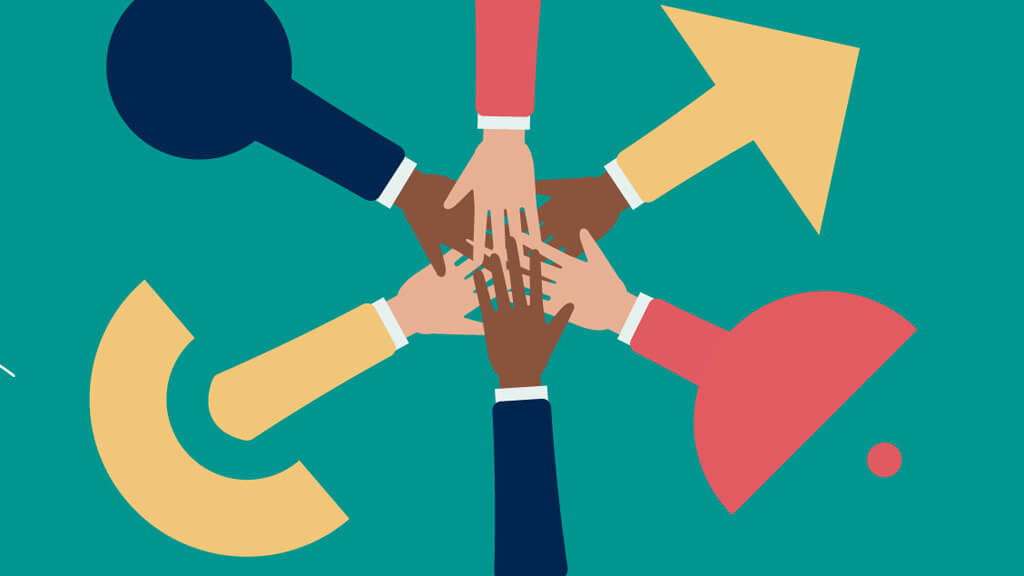With Pride celebrations flowing into July and August, there’s no better time to delve into the challenges that the LGBTQ+ community is still facing and what approaches businesses can take to support their employees and coworkers effectively. With an estimated 4.5% of the US population identifying as LGBTQ+, it’s essential that businesses analyze their inclusion policies and begin taking meaningful action to help their employees feel safe.
Currently, only 20 states ban at least some forms of discrimination based on sexual orientation and gender identity in the workplace, with 59% of LGBTQ+ individuals claiming that they feel they have fewer employment opportunities according to a report by Mental Health America.
Company policies can make it challenging for LGBTQ+ employees, as there are still many hurdles around parental leave and domestic partner-inclusive benefits. Re-evaluating and improving these policies is key for all business leaders looking to take the necessary steps towards a more inclusive, and supported, workforce. These statistics indicate how much work is still to be done across the USA to help provide the LGBTQ+ community with the tools and environment needed to thrive.
Performative activism is more harmful than good
Through a variety of parades, street festivals, community events, and educational sessions, Pride provides the community with an opportunity to peacefully protest and raise awareness of the challenges that still remain in everyday life, including the workplace.
Over the course of Pride months, many businesses begin “rainbow-washing” – the act of adding rainbows to branding in order to appear progressive and supportive of LGBTQ+ equality whilst doing the bare minimum to effectively support the cause. Adding Pride colors suggests to consumers that these brands are in fact ‘doing their bit’ to support, however, real efforts need to be demonstrated throughout the year and within the organizational structure, not simply through a rainbow logo for one month out of the year.
How to meaningfully support your LGBTQ+ employees and coworkers
There are a number of ways that employers can support the LGBTQ+ community within the workplace. However, corporate support stretches beyond simply calling yourself an ally; policies and procedures need to be implemented with tangible action in order for employees to truly trust and respect management teams.
Some key ways to meaningfully support your LGBTQ+ employees and colleagues are detailed below.
- Educate your teams and senior leadership members
Education is the critical first step that needs to be taken to ensure your LGBTQ+ employees feel safe and supported in the workplace. Providing all employees adequate training early on and implementing these practices into onboarding programs, helps ensure your LGBTQ+ commitment is present throughout the organizational structure and you’ll help reduce the chance of microaggressions and unconscious bias around the workplace.
Some of the most important educational pieces involve training staff on using inclusive language within the workplace and recognizing and responding to improper behaviors.
- Don’t slip into microaggressive language
It can be easy to stumble into biased language with no harmful intentions, however, being hyperaware of these language triggers is important. Misgendering is a common challenge in the workplace but including training on how to approach these topics, you can ensure that staff feels comfortable engaging with one another respectfully. Implementing pronouns on email signatures or LinkedIn profiles can be a simple step that provides a sense of inclusion to those in the LGBTQ+ community.
It’s also important to be wary of gender stereotypical questions around personal lives. Assuming that women have husbands or boyfriends and vice versa can make the LGBTQ+ community feel shamed for being authentically themselves. Instead, use language such as spouse and partner to welcome open conversation.
- Invest in and sustain support initiatives
Everyone wants to feel supported at work. Whether you’re struggling with your progression or looking for mental well-being support, you should have confidence in your management or HR team to be able to provide a satisfactory level of guidance. It’s important to build support groups for the LGBTQ+ community without necessarily being open and out. The idea is to create a comfortable environment, where LGBTQ+ employees and allies can engage with one another to build respect and understanding. Just as we would celebrate religious or public holidays, acknowledging important events and dates for the LGBTQ+ community and referencing that in company updates shows solidarity.
But as we mentioned earlier, this is more than saying you’re an ally. Invest in organizations, work with charities that give back to the LGBTQ+ communities such as Equality Federation, and get your teams involved in Pride events. These physical actions truly show that your company is doing more than performative activism.
- Don’t assume LGBTQ+ issues don’t concern you
You might think your business is immune to these challenges. Perhaps there are no openly gay or trans members within your teams, so you brush it under the carpet until someone from the LGBTQ+ community is recruited. It’s essential to establish your policies and values regardless of anyone’s status. Not only does it enable new employees to step into a workplace with substantial and effective foundations, but more often than not, you will have a member of the LGBTQ+ community on your team without knowing.
The truth is, no one owes you a ‘coming out’ story. The Williams Institute reported that over 50% of LGBTQ+ employees are not out to their direct supervisors, which is why it’s important to build a safe and trusting work environment from the top of the funnel down. The training of managers is critical since they shape their team members’ everyday experiences and need to provide that extra level of support.
Though some might feel comfortable addressing their pronouns and sexuality, others might not feel ready to express their personal details in the workplace. By demonstrating your allyship through initiatives and supportive leadership teams, you can feel confident that LGBTQ+ employees have a safe environment in which to work.
- Reinforce a diverse pipeline
All of these initiatives and efforts are just the beginning. Building an inclusive organization is the best way to ensure ongoing, meaningful support. By hiring and promoting a wide range of diverse individuals within an environment that encourages growth and retention, you’ll be setting up stronger foundations for future generations.
As soon as more LGBTQ+ employees shift into leadership positions, they are able to provide a voice for the community. It’s extremely valuable for members of the LGBTQ+ community to facilitate and guide these conversations, as that truly is the utmost support employees can receive. Without this, you simply have cisgender voices guiding a conversation they aren’t fully capable of. Inclusivity is the best way forward.
Where to find extra support for the LGBTQ+ community
If your business is yet to implement LGBTQ+ initiatives and policies but doesn’t know where to start, Pride At Work works with individuals across workplaces, unions, and communities to promote inclusion, encourage openness, and ensure safety, through education and alliances.
For members of the LGBTQ+ community looking for mentorship or guidance to get their business off the ground, the National LGBT Chamber of Commerce is invaluable in supporting LGBTQ+ business owners and showcasing the diversity of talent in the lesbian, gay, bisexual, and transgender communities
If you’re a member of the LGBTQ+ community looking for further guidance, reach out to charitable organizations such as It Gets Better Project has a mission to uplift, empower, and connect lesbian, gay, bisexual, transgender, and queer youth around the globe.
As with any sensitive subject, businesses need to be mindful of their approach. Speak with organizations and continue to learn about the LGBTQ+ challenges to better support your team members, in turn creating a stronger, happier workforce.

